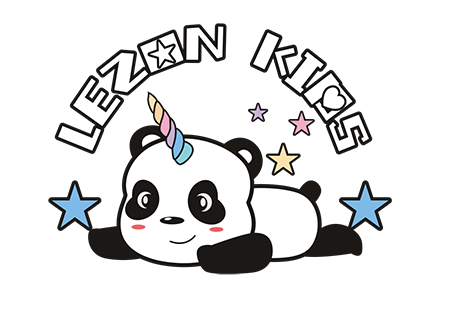China’s Tennis Craze Ignites Rapid Growth for Tennis Apparel
Source: Xinhua Net
As Zheng Qinwen secured China’s first Olympic gold medal in women’s tennis singles, tennis in China has truly “ignited.” With the Wimbledon Championships and French Open underway in 2025, tennis apparel has once again become a focal point for fashion brands and the industry. Markets for sports equipment, court rentals, training services, and tennis-inspired fashion have surged.
In fashion, the “Tenniscore” trend—urban tennis style—has swept social media. Brands are racing to capture market share through new collections, collaborations, and athlete endorsements. This tennis-driven fashion wave has transcended niche circles, fueling new growth for brands while becoming an expression of lifestyle aesthetics for the masses.
A Lucrative Billion-Dollar Market
“This summer, every sportswear store seems to have a dedicated ‘tennis skirt’ section,” noted Jiang, an avid sports enthusiast. She observed a noticeable increase in people buying tennis-inspired outfits around her: “Even Lululemon staff now wear ‘tennis skirts’ as daily attire instead of yoga wear.”
In fact, tennis apparel’s popularity surged as early as 2024. Tmall data revealed that searches for “tennis skirts” jumped 256% during the 2024 618 Shopping Festival, with sales up 160%. According to the 2024 Sports Consumption Report, tennis apparel sales soared 216% YoY, while tennis bag sales grew 37%.
This year, tennis apparel has evolved from a product trend to an industrial phenomenon:
- The Grand Slam tournaments drove peak demand: Tennis shoe sales reached ¥282 million in June 2025, up 34.6% YoY (data from Jiukantai).
- Brand ecosystems expanded: Sportswear giants (Anta, Li-Ning, Lululemon), luxury houses (Dior, Gucci, Prada), and fast-fashion players (H&M, On, Uniqlo, ZARA) have launched tennis collections.
According to iMedia Research, China’s tennis sports market is projected to hit ¥62.49 billion by 2029, with apparel (including footwear) dominating 56% of sales (¥1.51 billion in 2023).
“Recent years have seen sporty-casual and youth-oriented styles dominate fashion. Brands seek resonant sports niches, and tennis—as a prestigious, high-impact sport—naturally attracts attention,” explained Zhou Ting, Dean of the Yaok Research Institute. Similarly, Lululemon CEO Calvin McDonald stated in a Q1 2025 earnings call: “We see major growth opportunities in yoga, running, training, golf, and tennis.”
“Tenniscore” Reshapes Lifestyles
Tennis apparel’s rise stems not only from the sport’s growing popularity but also from the demand for athleisure. Functional yet trendy sportswear has become Gen Z’s go-to daily style, while tennis’ “old money” heritage offers a vehicle for social expression.
Historically symbolizing elegance and prestige, tennis fashion has now democratized, spawning diverse styles for everyday wear. The social media-fueled “Tenniscore” exemplifies this—blending classic tennis pieces (polo shirts, pleated skirts, sweaters, white knee-high socks) with street-style flair into comfortable yet chic ensembles.
Brands now emphasize balancing professional performance with fashion:
- adidas: Launched the retro-inspired London Originals line with sweat-wicking CLIMACOOL™ tech.
- FILA: Introduced dual-purpose tennis collections (Tennis series for competition; ORIGINALE for lifestyle) for Q3 2025.
- Ralph Lauren: Rolled out a Wimbledon-themed POLO collection merging preppy and vintage aesthetics.
“Tennis aligns with luxury brands’ high-end positioning while letting them embrace sporty, casual, and youthful elements to broaden their audience,” Zhou Ting noted. This signals luxury’s “lifestyle-ization,” where classic labels evolve to serve diverse customer needs.
Deepening collaborations between tennis and fashion have sparked hit products. Gucci revived its 1970s aesthetic in its Gucci Tennis campaign, worn by World No. 1 Jannik Sinner. New Balance teamed with Miu Miu, featuring US Open star Coco Gauff in co-branded apparel and footwear.
Winning Professionals, Capturing the Masses
Per Basic Data on China’s Tennis Development (National Tennis Administration Center), China’s tennis-playing population reached 25.18 million in 2024—up 28.03% since 2021—transforming tennis from an elite pastime to a mass-participation sport.
“The core challenge is winning over professional players first, then radiating that appeal to mainstream consumers,” a Li-Ning representative stated. Brands now innovate materials and tech to meet professionals’ demands:
- Li-Ning: New garments feature UV protection (UPF50+) and cooling tech (heat-dissipating fabric with cooling ratings ≥0.23J/(cm²·s)).
- Lululemon: Uses sweat-wicking, four-way stretch fabrics for unrestricted movement during matches.
Beyond sports, tennis wear’s breathable, lightweight, and elastic properties make it a daily staple. Fashion blogger Lu remarked, “Tennis skirts offer security against summer wardrobe mishaps. Off-court, we play with colors—even basics feel vibrant and eye-catching.”
Notably, Li-Ning highlighted two growth segments: women (now 47% of players, up from 45% in 2021) and juniors driving demand for specialized gear.
Intensifying Competition
As China’s tennis stardom propels the apparel market, competition among brands escalates. To stand out, players must strengthen product tech, diversify offerings, and sharpen differentiated storytelling—winning both professional and everyday consumers’ loyalty.





